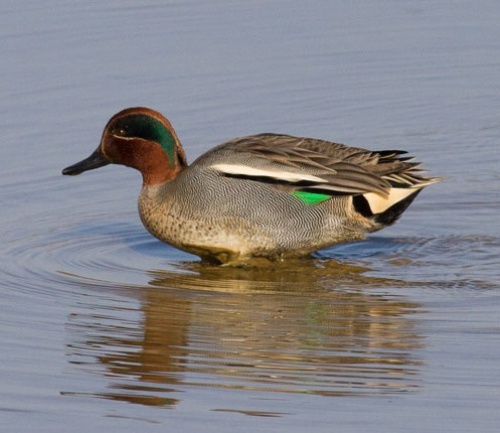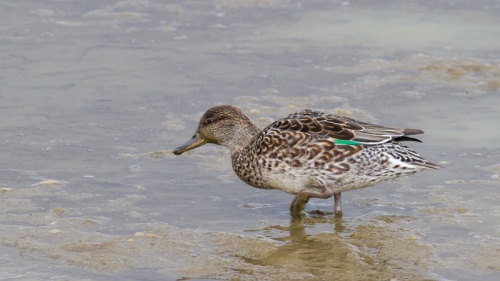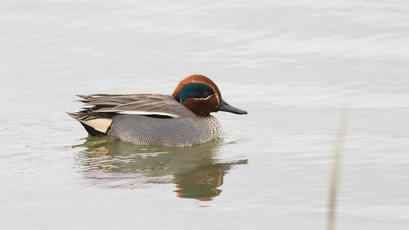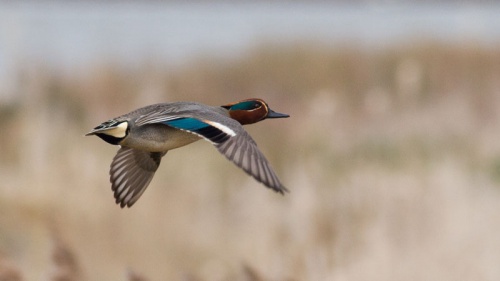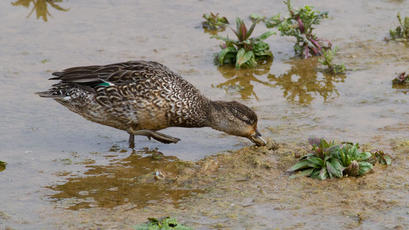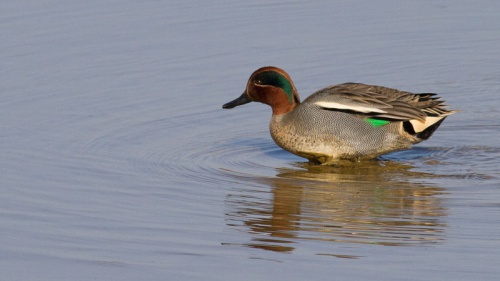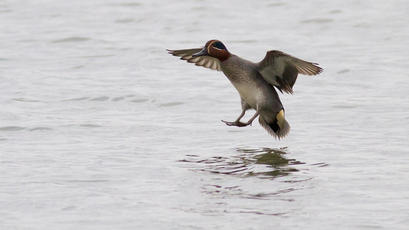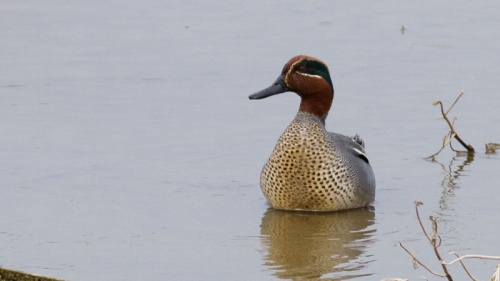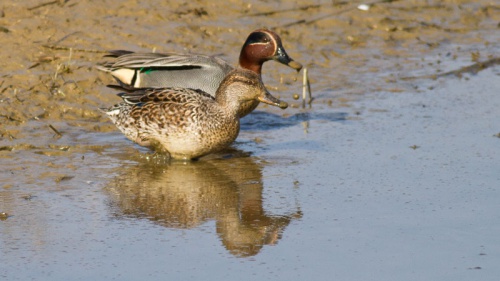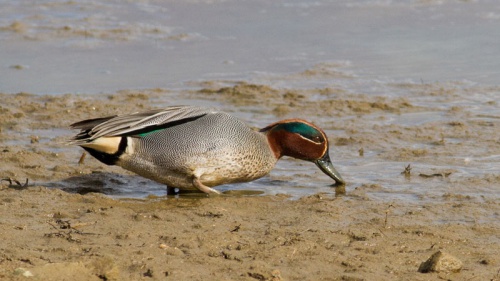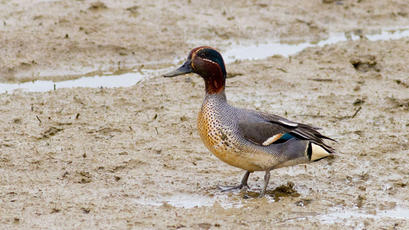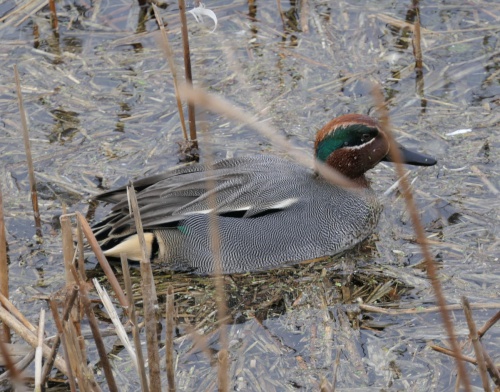Teal - Anas crecca
Our smallest duck (only Garganey approches Teal in size). Male's chestnut and green head looks all dark at distance. Green and black speculum and white wing bar in flight. They are thinly distributed as a breeding species with a preference for northern moors and mires. In winter birds congregate in low-lying wetlands in the south and west of the UK, boosted by immigrants from around the Baltic and Siberia. At this time, the UK is home to a significant percentage of the north-western European wintering population making it an Amber List species.
Best looked for in winter on wetlands, both coastal and inland.
All year round, but more plentiful in winter.
The Teal usually feeds by dabbling, upending or grazing and on occasion even dive to reach food. It nests on the ground, near water and under cover.
Fairly common and widespread in Britain
A common winter visitor and bird of passage in Leicestershire and Rutland, though rarely breeding here.
Leicestershire & Rutland Map
Enter a town or village to see local records
MAP KEY:
Yellow squares = NBN records (all known data)
Coloured circles = NatureSpot records: 2020+ | 2015-2019 | pre-2015
UK Map
Species profile
- Common names
- Teal, Common Teal, Eurasian Teal
- Species group:
- Birds
- Kingdom:
- Animalia
- Order:
- Anseriformes
- Family:
- Anatidae
- Records on NatureSpot:
- 1660
- First record:
- 14/01/2005 (Nicholls, David)
- Last record:
- 08/04/2024 (Messenger, Nigel)
Total records by month
% of records within its species group
10km squares with records
The latest images and records displayed below include those awaiting verification checks so we cannot guarantee that every identification is correct. Once accepted, the record displays a green tick.
In the Latest Records section, click on the header to sort A-Z, and again to sort Z-A. Use the header boxes to filter the list.


